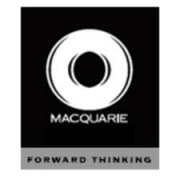Value Investor: Metcash in for the long haul
Wholesale grocer Metcash Limited (ASX: MTS) faces intense competitive pressures, which have prompted a costly strategic initiative to reposition the business for the long-term.
Significant execution risk surrounds the implementation of these changes and it remains to be seen how successful they will be in improving MTS’s earnings and profitability.
The core business of supplying groceries to independent retailers is structurally challenged and very competitive. The major supermarkets, Woolworths and Coles, continue to open new stores and invest heavily in value, passing on supply chain cost savings to consumers.
MTS’s competitive advantage is its convenience and ability to cater to local demands and specific requirements of the local community. Unfortunately, there has been a consumer shift toward value over convenience.
While the outlook for the Australian grocery market is generally positive and should benefit from predicted population growth of 1.5 per cent, this shift leaves the major retailers, Coles and Woolworths, best placed to benefit.
Woolworths and Coles continue to lower product prices and take market share from the independents. Market share for Coles and Woolworths is approximately 75 per cent, with Aldi and MTS at around 10 per cent and 9 per cent respectively.
Coles and Woolworths are also continuing to roll out stores at a rate of 3 per cent per annum. This is not expected to change, with both majors announcing aggressive expansion plans recently.
These developments have affected MTS, which reported a 6.3 per cent fall in operating earnings to $193 million for first half fiscal 2014, with management citing continued price deflation and intense competition impacting independent retailers.
To effectively compete against the majors, MTS’s strategy is to invest heavily in value and drive supply chain efficiencies through the business.
The question is: will the new strategy be enough?
MTS plans to invest heavily to refurbish and reinvigorate its store network, improve supply chain efficiency and price match all products against Coles and WOW. Capex will be done in conjunction with independent retailers contributing an equal share of capital to store refurbishment.
The strategic plan will require significantly higher operating expenditure of $40-45m in fiscal year 2015 and capital expenditure of $575-675m over the next five years.
To fund these initiatives, MTS is targeting working capital improvements of $30-$40m over fiscal years 2015 and 2016, reducing the dividend payout ratio from 80 per cent to 60 per cent, and continuing to offer its dividend reinvestment plan to shareholders.
While we see this as a credible and necessary strategy, significant execution risk remains about the restructure and stated targets.
The strategy is a fundamental shift from operating a supply-led model to demand-driven while also enhancing the fresh offer. MTS’s strategy is to better meet the needs of its independent retailers, where in the past many independents went directly to suppliers to obtain other products. The success of this new model depends on independent retailers changing their behaviour.
In addition, Australia now has more supermarkets per capita than the US and UK and excess returns may be competed away as retailers protect market share.
Food & Grocery Sales, MTS’s largest division, is expected to return to growth in fiscal year 2015 but a return to market growth rates is not expected for at least three years, which will be increasingly challenging given the new floor space being added by Coles, WOW and Aldi.
MTS’s earnings are expected to decline and stagnate for three years, as more capital is needed to restructure the business. As such, MTS is also experiencing declining profitability.
We reduced our adopted Return on Equity from 21 to 16 per cent (red below) and increase our Required Return from 13.5 to 14 per cent (green). The increase in required return reflects the risks created by fairly high gearing of 54%, restructuring and the structural trends in the sector.
Figure 1 – MTS Future Valuation
Source: StocksInValue
We have also reduced our forecast dividend and payout ratio (blue above) to reflect declining earnings and the reduction in the payout ratio to fund capital requirements. There may be further reductions in the payout ratio, depending on the success of the restructure. Investors should be cautious in taking a retrospective view of the dividend yield.
MTS is currently trading above our fiscal year 2014 valuation of $2.14 and given the above mentioned risks, we would require a 15 per cent margin of safety before purchasing MTS equity.
Written by Brian Soh, associate analyst, with insights from Alex Hughes of Clime Asset Management. StocksInValue provides valuations and quality ratings of 400 ASX-listed companies and equities research, insights and macro strategy. For an obligation-free, FREE trial please visit StocksInValue.com.au or call 1300 136 225.

















